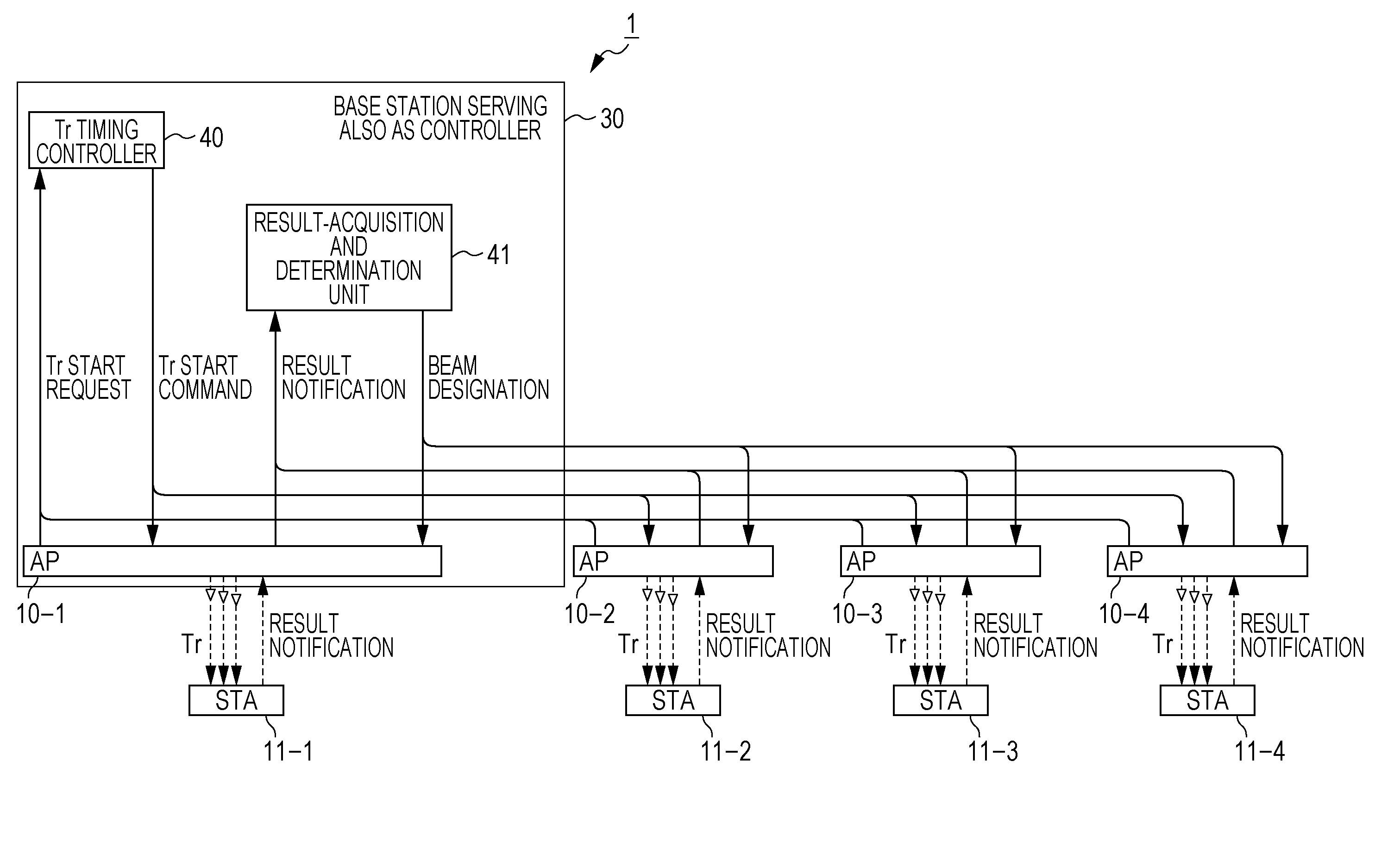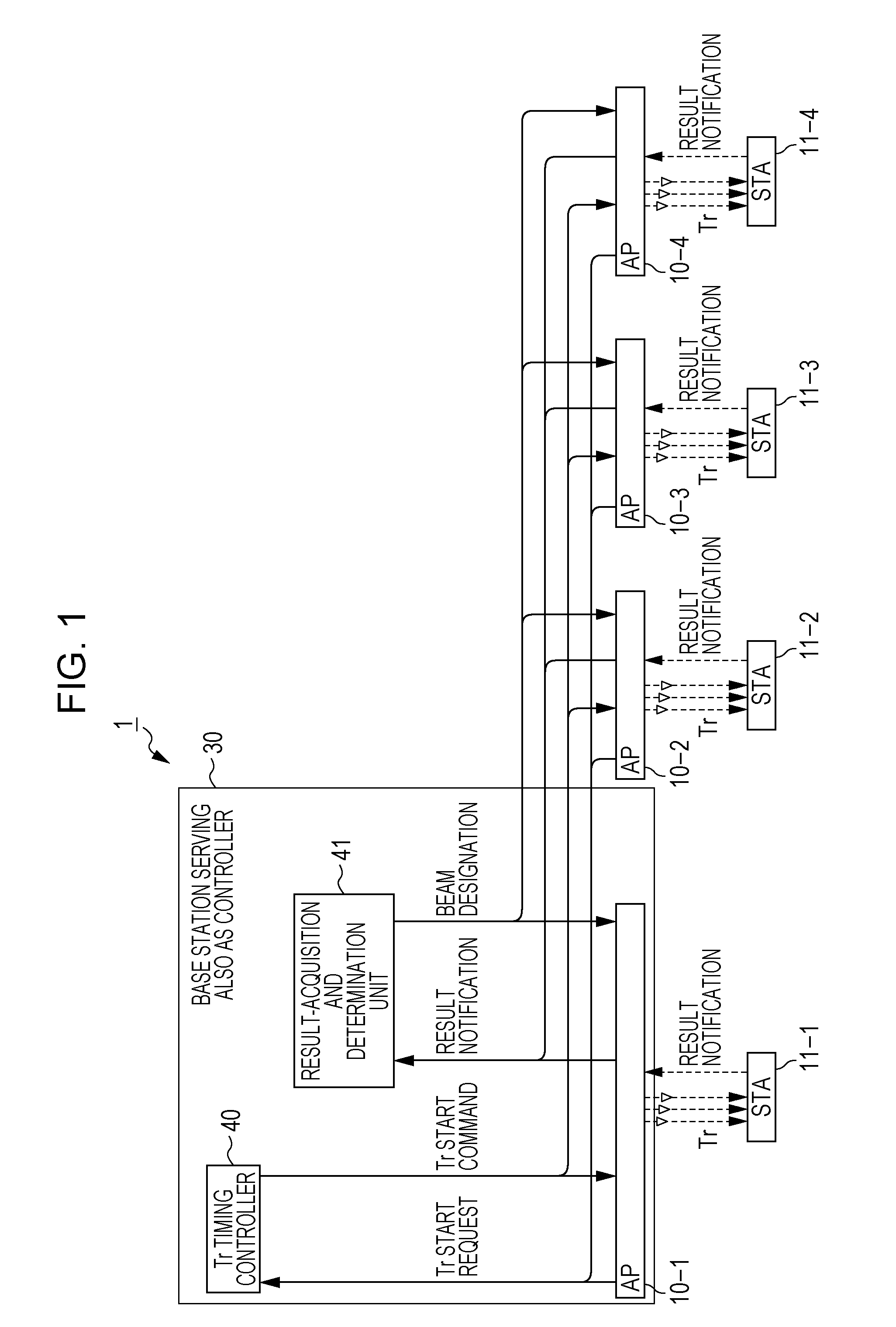Wireless communication method and wireless communication system
a wireless communication and wireless communication technology, applied in the field of wireless communication methods and wireless communication systems, can solve the problems of difficult to achieve a long transmission distance, large transmission loss, and further large transmission loss, and achieve the effect of difficult to prevent interference between adjacent channels
- Summary
- Abstract
- Description
- Claims
- Application Information
AI Technical Summary
Benefits of technology
Problems solved by technology
Method used
Image
Examples
embodiments
[0066]FIG. 1 is a block diagram illustrating a configuration of a wireless communication system according to an embodiment. In FIG. 1, the wireless communication system 1 according to the embodiment operates by using mainly a frequency band equal to or higher than the millimeter wave, and communication is allowed between respective four base stations 10-1 to 10-4 each having three beams and being capable of switching the three beams and corresponding four terminal stations 11-1 to 11-4. Of the four base stations 10-1 to 10-4, the base station 10-1 includes a unit (a control unit) that performs beam forming training between the four base stations 10-1 to 10-4 including the base station 10-1 itself and the four terminal stations 11-1 to 11-4 and sets optimum beams for the respective four base stations 10-1 to 10-4.
[0067]The base station 10-1 includes a control unit 30 including a Tr timing controller 40 and a result-acquisition and determination unit (corresponding to a storage unit, ...
third example
of Application
[0113]A base station may command terminal stations and base stations to perform transmission beam forming training sequentially in the order from the terminal stations to the base stations. In this specific example, Grant frames are used to send a start request, and Ransack frames are used to send a start command. FIG. 16 and FIG. 17 are diagrams illustrating a method of performing beam forming training in the wireless communication system 1 according to the third example of an application of the embodiment. This method is useful, for example, in a case where a terminal station triggers the start of the beam forming training when the terminal station detects degradation in communication quality.
fourth example
of Application
[0114]After the combination of transmission beams is determined taking into account the state of interference via the procedure described above, reception beam forming training may be performed at each base station and terminal station. FIGS. 18 to 21 are diagrams illustrating examples of methods of performing beam forming training in the wireless communication system 1 according to the fourth example of an application of the embodiment.
[0115]In the following description with reference to FIGS. 18 to 21, it is assumed by way of example that there are three base stations and three terminal station, and three channels are used. Note that the beam forming training may be performed in a similar manner and similar effects may be obtained also in a case where there are four base stations and four terminal stations and four channels are used.
[0116]In the example illustrated in FIG. 18, the combination of beams on the transmission side (the base stations) is fixed and the comb...
PUM
 Login to View More
Login to View More Abstract
Description
Claims
Application Information
 Login to View More
Login to View More - R&D
- Intellectual Property
- Life Sciences
- Materials
- Tech Scout
- Unparalleled Data Quality
- Higher Quality Content
- 60% Fewer Hallucinations
Browse by: Latest US Patents, China's latest patents, Technical Efficacy Thesaurus, Application Domain, Technology Topic, Popular Technical Reports.
© 2025 PatSnap. All rights reserved.Legal|Privacy policy|Modern Slavery Act Transparency Statement|Sitemap|About US| Contact US: help@patsnap.com



